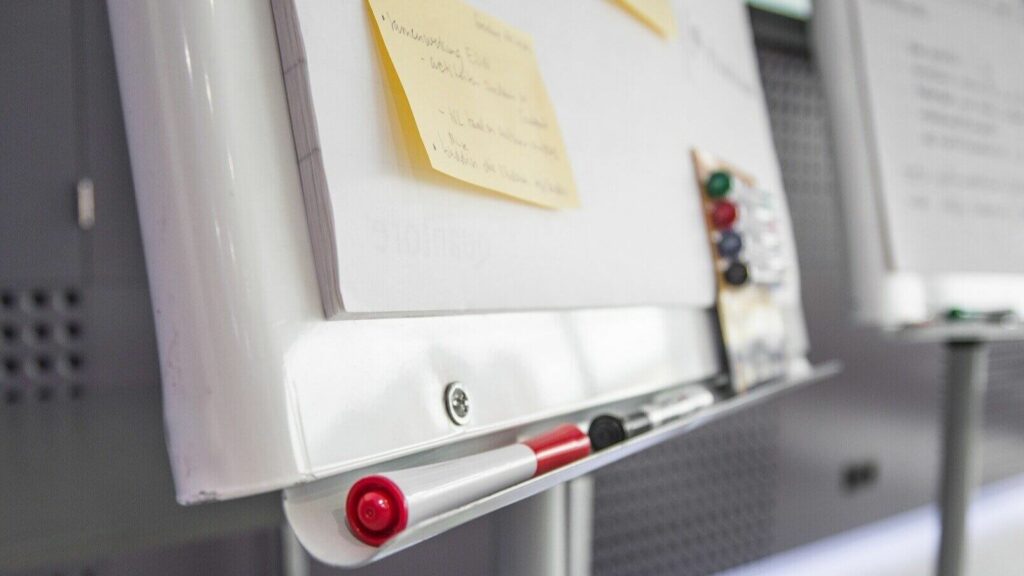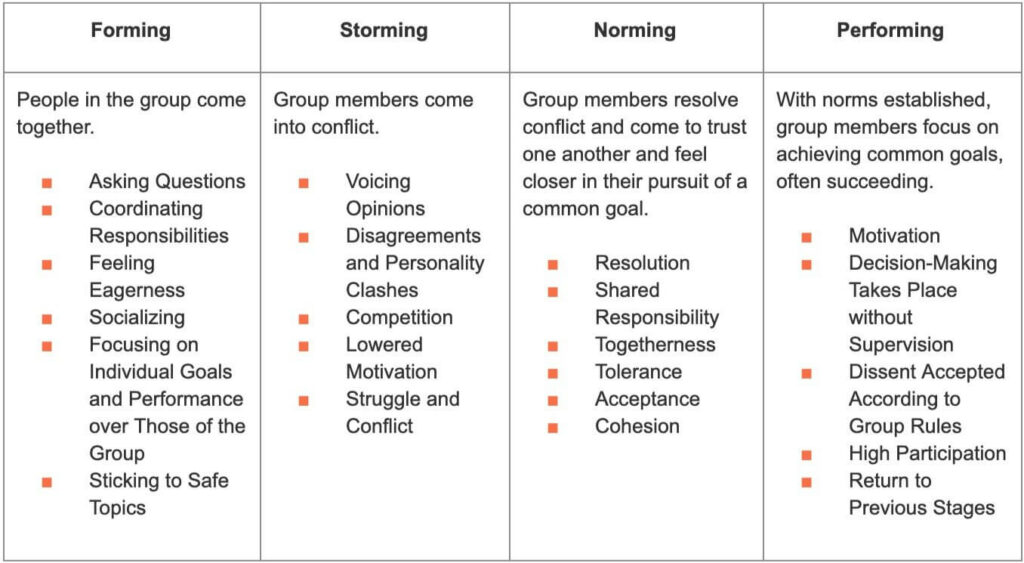When I launched Ethos almost exactly two years ago, I never imagined I would spend up to half of my time collaborating with companies on their affinity groups. In these groups, which also include employee resource groups (ERGs), business resource groups (BRGs), and diversity, equity, and inclusion committees, I saw a real opportunity to launch grassroots initiatives that supported belonging in organizations. So, I signed on as a facilitator, designer, expert panelist, and project manager over and over again.
Overwhelmingly, my clients handed me an ambiguous brief that could be distilled down to a simple and lofty goal: enhance the impact affinity groups have in the company. As I embarked on this work in a diverse mix of companies, who at first seemed to have completely non-transferable needs and demands, I desperately wanted a step-by-step guide that I could loosely follow, periodically adjust, and react against in order to crystallize my own thinking. Since I couldn’t find that guide, I relied on a variety of tools, including books on design thinking and diversity, equity, and inclusion, research on social identity groups and their self-advocacy initiatives, and experimentation within client companies.
By now I’ve worked on affinity groups so frequently and over a long enough time period that my whole team has an internal product, a menu, I have created that outlines how we can help. It was a long road to travel down, though, and I don’t see any reason for others embarking on this journey to navigate it alone like I did.
In fact, last week, six different people asked me, “What do I need to do to make sure my [insert group name] makes a real impact?”
My answer is that depending on which critical inflection point the group is hitting, there is a different process. Specifically, I’ve identified three critical moments in the life of a group where our expertise as consultants at Ethos – or more elbow grease from internal leaders in DEI – is necessary: launching, rebooting, and transforming.
To support affinity groups, I am starting a three-part series on how to do each, starting with how to launch a group successfully.
Launching a Group
Who doesn’t love a multi-step process?
I see the world in frameworks. If I need to understand a new concept, the first thing I do is break it into chronological steps. Solving the problem of launching an affinity group that creates real value is no different. Here’s my twelve-step guide to supporting grassroots DEI communities.
Step 1: Identify a Company-Specific Why

So here’s the thing, there’s a reason Simon Sinek’s presentation on starting with why is the third most-watched TED Talk of all time – it works. Whether you’re a C-suite leader who is trying to inspire employees to take action around diversity, equity, and inclusion or a change agent working to convince both leaders and peers alike that an affinity group is essential, the place to start is “Why?” Specifically:
Why does your company need an affinity group?
As much as “it’s the right thing to do” seems like a good answer, it’s usually not one that leads to action in the early stages of forming an affinity group. Why is it the right thing? And, who is it the right thing for? What justifies investing in this kind of intervention versus another?
Before launching an affinity group, ask yourself these key questions to shape a larger business case:
- What are the company’s vision, mission, and values? How do these intersect with diversity, equity, and inclusion?
- What is your company’s orientation towards diversity, equity, and inclusion?
- How would an affinity group impact the company’s vision, mission, and values? How would it support diversity, equity, and inclusion at the company?
- Why is now the right time to launch an affinity group at the company?
- Who in the company will benefit from an affinity group? Why?
- How will the company know the affinity group is positively impacting the company? (i.e. Employee Engagement scores, more representation in leadership, etc.)
Ultimately, affinity groups are company-sponsored, and without reciprocal commitments from both employees and the leaders of the company, they can’t achieve their full potential. That’s why it’s critical to start with a clear business case.
If going through this process reveals that you need another kind of DEI intervention, don’t be discouraged. That’s good news! Remember, an affinity group is just one vehicle for inspiring change in an organization when it comes to social identity.
Step 2: Get Clear on Resources, Commitments, and Expectations
Once you have developed the business case, it’s time to get clear on what you need to actually launch the group and who is in a position to provide it. This means identifying:
- Who are your key stakeholders? One of the challenging aspects of affinity groups is that you typically have at least two kinds: the people the affinity group serves and the people who empower the affinity group to serve them. Can you name these people? What do you need from them in order to successfully launch the affinity group?
- What might you need to achieve the business case around the affinity group you’ve identified? You might need money, time, leadership’s public endorsement and participation, access to information, connections to other affinity group leaders, or even an external facilitator to support your initiatives. If you’re similar to Ethos clients, you may need all of the above.
- For those you plan to involve in the Committee, what do you expect them to commit? Whether you are interested in creating a formal board for the affinity group or simply welcoming members, you need to know how you want them to commit to the group. Will you need regular meetings? Availability after hours? Do you want them to commit to surfacing new ideas and developing new processes? Importantly, what is your commitment to them? If they give you an hour a week for a full year, plus extra hours for launching one or two key initiatives, what will you commit to in supporting them? Will they have more access to professional development opportunities or a clearer conduit to the leadership team? Will you build team bonding and socialization into your structure? Knowing what you want others to promise and what you plan to promise in return is critical to identifying what resources you need.
- What do you expect of the company, and what does the company expect of you? Like the folks who end up participating in the group, it’s important to lay out what you expect of those leading the company and what they expect of the group itself from the very beginning. Perhaps the most challenging issue Ethos works to solve when rebooting affinity groups is expectations misalignment between group members and the company’s leaders. For example, if company leaders want the affinity group to be a way of educating employees on diversity, equity, inclusion or social identity, but group members want a platform for activism inside and outside of work, it’s important to know that upfront. It’s also important to understand what employees expect and envision, especially if the affinity group exists to serve specific coalitions (i.e. Gender Identity/Expression, Race/Color, Nationality/Ethnicity, Ability, etc.).
Once you understand the answers to these questions, I’m assuming you’ve been in conversations with all of the necessary stakeholders and have been given the green light to fully build-out and launch your affinity group. If you find progress stalled at this point, go back to step one and make sure your business case is truly compelling!
Step 3: Design an Inclusive Process

I could write an entire series on how to do this, so instead of diving into the nitty-gritty details, here are the three most important parts of designing an inclusive process for joining an affinity group.
1. Know Your Audience
Design a process that reflects how your company typically likes to engage in projects and groups like this one. For example, if your company is remote-forward, make sure you build a Communication Plan for sharing information about joining the affinity group with folks who are remote and ones who aren’t.
As you design the process for actually getting your group together, make decisions on how people can participate in the group based on a few questions:
- How do people in the company best receive information?
- How do people in the company typically volunteer to participate?
- Who most often gets a voice? Who doesn’t? How might you bridge that gap and make sure everyone has the chance to speak up?
- When has a group come together really successfully within the organization? What did that process look like?
- When did a group fail to get started within the organization? What did that process look like?
- Are the people the affinity group exists to serve to help design the application and/or appointment process?
- Who can you involve in the process to make it more inclusive?
2. Clarify and Contextualize
When you design the process for getting the group together, whether it’s through soliciting applications, assembling an advisory committee to make special appointments, or even a blend of the two, it’s important that you clearly define how people join the affinity group, why this is the process, and what is expected of prospective participants and selectors. Because I clearly like putting together massive documents, I typically write all of this up in a Context Document, which gets shared across the company. I also break down everything in the Context Document in an email, over Slack, and in a company-wide meeting.
3. Create Multiple Entry Points
“Why should he carry the burden of representation when it will only hold him back?” –Girl, Woman, Other by Bernadine Evaristo
I see people take shortcuts in forming affinity groups all the time. An affinity group organizer or company leader will suggest that a specific marginalized employee should take this work on, whether this person is the only black woman in the company, one of the few openly gay salespeople, or otherwise. This is not the right approach. Running an affinity group is work, and to ask a marginalized person to do this work when they haven’t volunteered themselves reinforces their marginalized status, sends the message that their marginalization is their problem and not the company’s, and asks them to invest time, effort, and energy in something they may not even particularly care about or want to do just because they check a box.
Instead of taking this approach, I recommend acknowledging that an affinity group made up of sole allies will have blind spots, and it’s important to name that within the company. Basically, market the opportunity to join, but also recognize that it’s not the only way for the group to form or for others to benefit from the work.
Additionally, go talk to the people you want to advocate for. They may not want to join, but they may be open to talking about their experience and how to make it better. Invite the people you want to support, and gracefully accept if they decline while creating other avenues for them to share knowledge.I particularly admire the way dscout used research to understand Black History Month and what their participants most want to celebrate in February.
This advice goes for employees from dominant groups, too. Letting people know they can support and participate in the group even if they don’t join as a member is critical to the process of building a relationship to the larger employee base. Recognize that even if an employee doesn’t join, they can still attend events, participate in surveys, make space for your announcements in their team meetings, or potentially jump on and off relevant initiatives as you design them.
Step 4: Invest in Team Development in the Forming Stage
In my experience, this is the most critical step and the most overlooked. When new groups come together, they enter Bruce Tuckman’s Stages of Group Development (captured below in Ethos terms). When these groups try to skip the important process of getting to know each other’s communication styles, bonding over shared experiences, and simply navigating boundaries, they struggle with performance and end up in the storming phase more often than not.

To get off the ground, it’s important the group takes time to get to know each other. I recommend scheduling at least one “get to know you” lunch, using a straightforward assessment like the Four Tendencies or the MBTI-based Sixteen Personalities to identify working style preferences, and user manuals to make understanding one another easier and faster.
Step 5: Develop a Vision Statement

Let me be clear – this is a vision statement for your affinity group. There’s a temptation that this stage to create the company’s DEI Statement if one doesn’t exist already. While this might be a useful initiative in the future, it should exist after you understand your affinity group’s role in the organization. Depending on what you determine, you may find your group shouldn’t touch the DEI Statement or that the group has an obligation to not only create it but to own it as well. So, what goes in your affinity group’s vision statement?
- Vision: This is a paragraph or two about why your affinity group exists. This may echo the business case you built in step one, though it will likely be broader and higher level in order to encompass all of the voices the group represents.
A vision statement I wrote recently started like this:
“Our product is our people, and we believe that by creating the structures that allow every person here to feel welcomed, valued, and fully leveraged for who they are, we are supporting the growth of the company, our teams, and individuals from all backgrounds.”
- Guiding Principles: If your vision is your why then your guiding principles are your how. How do you plan to achieve your vision? What principles will you hold yourselves to? Some principles might include:
- “We believe in radical inclusion when it comes to decision-making.”
- “We make the implicit explicit.”
- “Research guides our initiatives.”
Note that some of these principles speak to you and others don’t. Good! I highly recommend focusing on the guiding principles that resonate within your affinity group, so long as they align with general company values.
- Focus Areas: Your focus areas are the what of your operation. They are the outcomes, initiatives, and products of your vision and guiding principles. Call them pillars, practices, or focus areas – all that matters is that they clearly define your scope.
For example, if your focus areas are education and community-building, you know creating a public education program is well within your reach; on the other hand, teaming up with HR to conduct a payroll audit to measure wage equity may not be. This offers clarity and helps narrow down infinite possibilities so you can direct your attention to where it counts. In my experience, choosing focus areas that play to the affinity group’s strengths and take into account the resources you have – and the ones you don’t – is the most practical way forward.
Step 6: Set Measurable Objectives

This step is tricky because I always want to introduce it before setting a vision, so I am going to present both the pros and cons of setting it where I have.
Here’s why it can work – keeping affinity group members excited is 80% of the work. This may sound like an exaggeration, but it’s true. There are so many other demands on time and attention inside of a company, and launching something new takes a lot of upfront investment. When we’ve started with objectives in our client systems, we have a facilitated brainstorm session – sometimes even a set of brainstorm sessions – where everyone gets to voice their highest hopes. They emerge motivated, excited, and ready to get to work because their internal drivers for change are being heard. This energy is infectious and spreads beyond the group to other pockets of the company.
However, there are a few reasons why I am sticking to the current order and putting this squarely after visioning. First, it’s really hard to set good, measurable objectives when you don’t actually know who you are as a group yet. The objectives end up shifting in flavor, cadence, and order much more when they are set before the vision and pillars. There also tend to be way more of them, and the group falls victim to overcommitment and lack of focus. Finally, at these critical early stages, when we’ve started with objectives, we’ve run the risk of having individuals commit more fully to the ideas they volunteered than to what the group ultimately decides will most positively impact others. This competition derails progress and creates unnecessary tension.
You may have noticed that I used the word “measurable” instead of just recommending “set objectives.” To the earlier point of keeping people motivated, knowing whether efforts are working isn’t just vital to building the business case and gaining continued support from everyone in the company, it’s also what makes group members feel like they’re contributing. A measurable objective can be assigned a specific number or an outcome – I’m flexible here. The point is that everyone in the group should know whether the objective is a) done and b) successful or not. Bonus points if each person in the group is assigned their own measure that they are responsible for tracking, reporting, and hitting overtime.
Step 7: Communicate Progress to the Company
Once you have your vision statement and objectives in place, it’s time to communicate what you’ve developed to the company. For one, you now represent employees in a unique way, which makes you responsible for their experiences and therefore responsible for telling them what you are doing. Second, this is hard work, and it’s often thankless. Burnout in affinity groups is common, and it’s not just because of members’ competing priorities doing core work.
Affinity groups that have impact typically do a lot behind the scenes, only to hear silence when things go well and criticism when things go wrong. Plus, as representatives of DEI at the company, employees have expectations of you, whether you know them or not. To get a better sense of what these expectations are, take a pause to make sure you’re meeting them, and create more opportunities for congratulations overcorrections, continuously communicate what you are doing the company. You might report out what you’re doing through:
- Town Halls and All-Hands meetings
- Confluence, Slite, or other information management systems
- Email and Slack
- Open affinity group meetings
The key here is to share the same progress updates through multiple channels and create a clear forum for feedback so others feel their voices can be heard.
Step 8: Develop a Roadmap and Action Plan

By now, you have the company’s buy-in, your fellow employees know what you’re doing, and you have a list of objectives you want to pursue. You’re almost ready to get to work; all you need to do is map out the next 3-12 months and layout when you want to do what. So, how do you know what to do first and what to do later? Start by looking at your objectives and determining if they are fully formed or need corresponding initiatives. Sometimes an objective is made up of three or four parts, each part representing a whole development and roll-out process. Make sure you know this ahead of time whenever possible.
Then, with your objectives and initiatives laid out, start ranking them based on:
- How long they will take
- Who they will impact
- How much impact they will have
- Who will lead them
- What resources are necessary to launch them
- Who needs to be on board to launch them
- How much work it will take to maintain them over time
With this in mind, determine which should be short-term (launching in 0-3 months), mid-term (launching in 3-6 months), and long-term (launching in 6-12 months). Lay them out in a timeline or roadmap format. From there, for each initiative, detail the steps necessary to achieve them as precisely and tactically as possible. These bullet points will form your action plan for the next year.
Pro-tip: Quality over quantity is absolutely critical when it comes to affinity groups. Choose no more than 1-2 objectives to pursue per time frame to avoid overwhelming group members and leaving loose ends.
Step 9: Present the Roadmap and Action Plan to the Company
Once the group has agreed on the Roadmap and developed the Action Plan, it’s time to share it with key stakeholders. Depending on where you work, this might be your affinity group’s sponsor, the whole leadership team, or even the whole company. Following the guidelines in Step 7, make sure that you make the information available in multiple different formats, and create a few different opportunities to engage with feedback so that you can make adjustments, revisions, and additions based on the responses you receive. Remember that while you are looking for feedback in this step, you’re also nearing the end of your process, so it’s up to you to be persuasive. You have done a lot of work to launch this affinity group, so communicate it with passion! Using your credibility, comparable case studies, and the work you plan to do in the future, build a case around your Roadmap and Action Plan, appeal to your audience’s goals and values, and present clear examples of why you think this work is crucial.
Step 10: Launch the First Initiative(s)
I will shout this from the rooftops until I am blue in the face: never underestimate the power of a quick win. In Step 8, you determined which initiatives you wanted to launch first based on their impact, feasibility, ease, and internal momentum. Now, it’s time to launch! To quote one of my favorite shows of all time, The Adventures of Korra, “Do the thing!” Whether you decided to create a belonging survey, lead a DEI training, create a guide for inclusive onboarding, or start an apprenticeship program for underserved community members (along with literally millions of other initiatives), it’s time to do it. So, back to this quick win idea. Choose the splashiest and easiest initiatives to launch now so that you can build momentum and support from the rest of your company as you embark on harder, longer-term initiatives. You need the goodwill to keep people invested, and if you launch with a bang, they will remember. True story, my first time running a committee was a success despite the fact that I missed half of these steps and completed the ones I did follow out of order. The reason it was still effective was that our first initiative was around employee appreciation. And, you got it, employees really appreciated it. We designed a few simple appreciation exercises and secured a social activity budget from the leadership team. Employees of all backgrounds had been feeling taken for granted and ignored – especially ones from marginalized identities – and our company-wide Appreciation Day inspired an unbelievable amount of gratitude and positivity that followed us through more fraught and taxing initiatives.
Step 11: Solicit Feedback

Technically, you should be soliciting feedback constantly through your progress updates and company-wide communications. With that said, survey fatigue is real, and the kind of feedback you will be gathering before now will be conversational and anecdotal. Once you have formed and actively launched initiatives employees can engage with, take the time to issue a short survey. It’s up to you and your group members to determine what you want to measure, but remember that this not about employees’ experience at the company or demographic data (this might actually be another initiative you take on), so much as a way of gauging the perceived effectiveness of your work. To craft a survey people are more willing to fill out than not:
- Make anonymity the default with an option to self-disclose if folks are willing to have a deeper conversation
- Limit the survey to seven or fewer questions
- Keep responses multiple-choice except for one or two free responses, which should be optional
- Take the surveys yourselves and make sure they take no more than five minutes to complete
If you find you’re not getting enough data through a survey, I also highly recommend working with team leaders to see if you can do quick 5-10 minute drop-ins on preexisting, team-specific meetings to ask employees their thoughts. The key is to try multiple approaches to get the data you need to better serve your peers.
Step 12: Reflect on Outcomes
Make sure to leave space for a proper retrospective when your affinity group closes out, or mostly completes, initiatives. It’s up to you whether you publish and present the results of your retrospective company-wide or keep the results for internal purposes only. All that matters is that you complete the cycle and make time to reflect so that you can continuously improve. While I tailor my retrospective questions for every group I’m part of, here are the ones I find most useful across multiple situations:
- What did we launch?
- What succeeded? What were our biggest wins?
- What presented challenges? What could have been done differently?
- What is our biggest lesson learned?
- How did we work together? What did we do that worked? How could we have worked together better?
- How did we work with the rest of the company? What worked? What could be improved?
- What are our highest hopes for the next initiative based on this retrospective?
Feel free to use survey results to conduct your retrospective, but don’t use them alone. Your team members should be bringing their experiences, perspectives, and opinions to the table at equal weight since they are closest to the process.
I can’t stress enough how important it is not to throw the baby out with the bathwater – as you do your retrospective, truly and meaningfully appreciate what worked. Use these strengths as a launching pad and leverage them to inform future initiatives.
Oh, and… remember to celebrate. Our collective (American) cultural focus on self-improvement means we spend a lot of time picking ourselves apart and not a whole of time celebrating that we did good work and helped people, too. After you finish your retro, go do something fun and reflect on your victories. I promise it will serve you on multiple levels.
Parting Words
This is an imperfect guide. When it comes to group dynamics and inspiring change, there are many approaches, and mine is just one that is likely going to evolve as I work on the next set of affinity groups. My hope is that you will read this, and take what is useful with you while leaving the rest behind. In my view, the purpose of guides like this one is to give you something to react to and form your own theories and ideas around as a response. As you launch your affinity groups, I hope to hear what lands well and what doesn’t.
This is part one of a larger series on launching, rebooting, and transforming affinity groups of all kinds. Stay tuned for the second installment next month.

